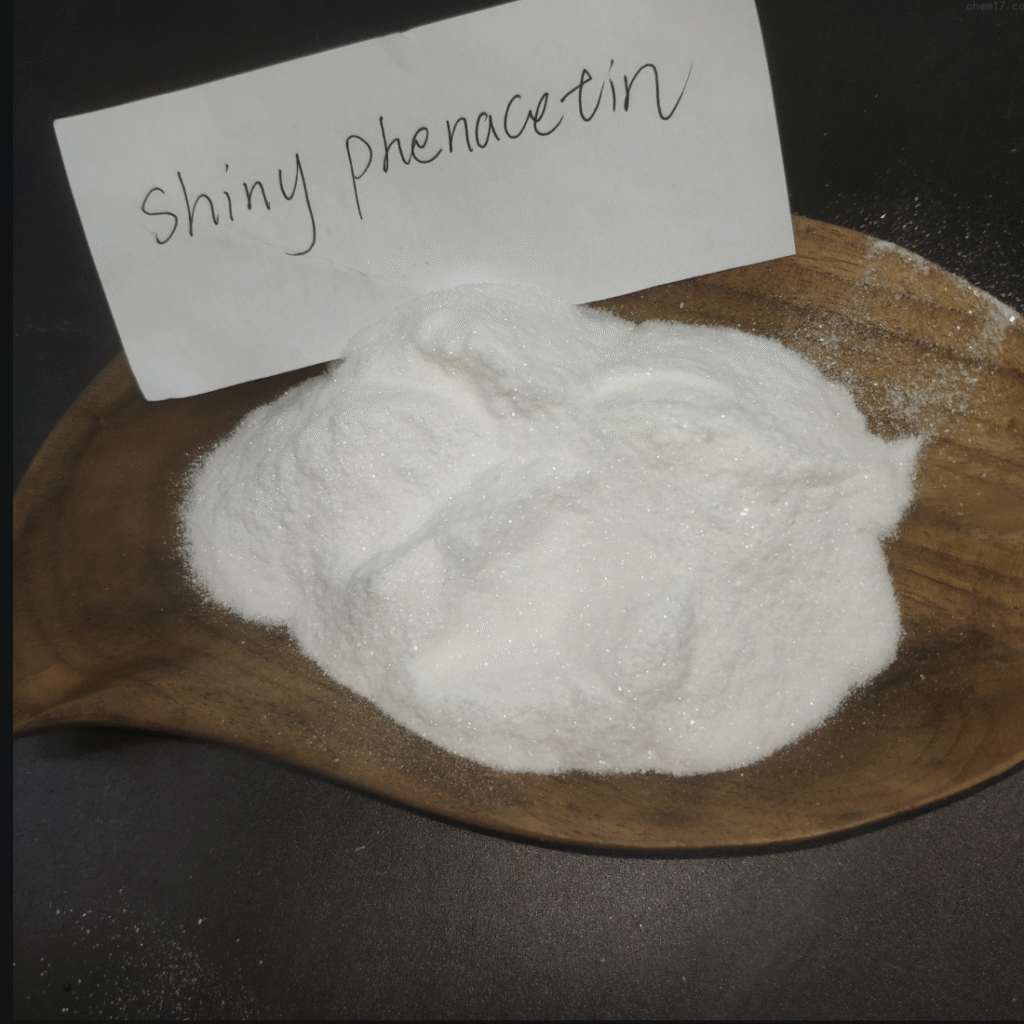What is Phenacetin?
Phenacetin is a synthetic organic compound, known chemically as *N-(4-Ethoxyphenyl)acetamide*. For decades, it was a cornerstone of over-the-counter medicine before being withdrawn due to safety concerns. Today, it is primarily used in controlled research and industrial settings.
Its basic identifiers are:
- Molecular Formula: C10H13NO2
- CAS Number: 62-44-2
- Appearance: White, crystalline powder
- IUPAC Name: N-(4-ethoxyphenyl)acetamide
The History and Rise of Phenacetin as an Analgesic
Phenacetin’s history is a fascinating chapter in pharmacology. First introduced in 1887, it quickly became a widely used analgesic (pain reliever) and antipyretic (fever reducer). Its most common application was in so-called “APC powders” or tablets, which combined Aspirin, Phenacetin, and Caffeine.
For much of the early 20th century, it was considered a safe and effective alternative to other pain relievers. However, its widespread use eventually revealed significant health risks.
Why Was Phenacetina Banned?
The most critical Phenacetin information for anyone to understand is why its consumer use was discontinued. By the 1960s and 1970s, epidemiological studies began to show a strong link between the long-term, high-dose use of Phenacetin and several serious health conditions:
- Nephropathy: Kidney damage and chronic kidney disease were the most well-documented risks.
- Carcinogenicity: It was classified as a “Group 2A carcinogen” (probably carcinogenic to humans) by the International Agency for Research on Cancer (IARC), particularly associated with urinary tract cancers.
- Methemoglobinemia: The compound can interfere with the blood’s ability to carry oxygen.
Due to these risks, Phenacetin was banned for over-the-counter and medicinal use in most countries, including the United States in 1983 and Canada in 1973.
Modern Applications and Uses of Phenacet Today
While banned for medicinal use, Phenacetina still holds significant value in non-consumable, professional applications. This is a key piece of Phenacetin information for modern scientists:
- Chemical Research & Synthesis: It serves as an important precursor or chemical intermediate in organic chemistry for synthesizing other, more complex compounds.
- Pharmaceutical Development: Researchers use it in labs to study metabolic pathways, analgesic mechanisms, and the structure-activity relationships of similar molecules.
- Analytical Reference Standard: High-purity Phenacetin Powder is essential in laboratories as a calibration reference standard for techniques like HPLC (High-Performance Liquid Chromatography) and GC-MS (Gas Chromatography–Mass Spectrometry) to ensure the accuracy of their equipment.
- Academic Studies: It is used in university settings for teaching advanced organic chemistry and pharmacology principles.
Essential Safety Information and Handling
Phenacetin is not for human consumption and is for research use only. Safe handling practices are non-negotiable. Key safety information includes:
- Personal Protective Equipment (PPE): Always wear nitrile gloves, safety glasses, and a lab coat.
- Engineering Controls: Use a fume hood to avoid inhaling any airborne powder.
- Storage: Store in a cool, dry, well-ventilated place in a tightly sealed container away from incompatible materials.
- Regulations: Buyers are responsible for complying with all local, state, and federal regulations regarding its purchase, storage, and use.

Frequently Asked Questions (FAQ)
Q: Is it legal to buy Phenacetin?
A: Yes, it is legal to purchase Phenacetin for research, chemical synthesis, and industrial applications. It is not legal to sell it as a consumable drug or medicine.
Q: What is the purity of research-grade Phenacetin?
A: High-quality Phenacetin Powder for research is typically 99% pure or higher. Reputable suppliers will provide a Certificate of Analysis (CoA) to verify this.
Q: Where can I find more technical information?
A: Detailed technical data sheets and safety data sheets (SDS) are available from chemical suppliers. PubChem is also an excellent resource for molecular data. [Outbound link to the Phenacetin page on PubChem].
Q: What replaced Phenacetin in medicine?
A: Acetaminophen (Paracetamol), which is a primary metabolite of Phenacetin, largely replaced it. Acetaminophen provides similar analgesic and antipyretic effects with a different (though not absent) risk profile.
(Conclusion)
The story of Phenacetin is a powerful lesson in pharmacology, consumer safety, and scientific progress. While its history as an analgesic is closed, its role in modern chemistry and research is very much active. This Phenacetin information guide highlights its journey and current, legitimate uses. For researchers seeking high-purity materials, understanding this context is part of practicing responsible science.
